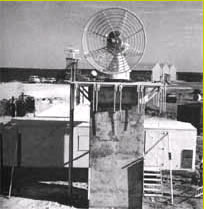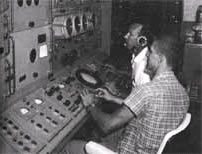Verlort
 During the Mercury Missions of the late 1950s early 1960s, it was considered mandatory to receive information on a real-time basis from lift-off to landing. Verlort was a type of S-Band Radar used in conjunction with C-Band Radar and Acquisition aid to enhance tracking of space craft for greater distances. Bermuda was one of many radar sites that was strategically located along the trajectory path and supplied valuable data to computers for the purpose of evaluating whether or not the mission would continue. The Bermuda station performed two duties: as a backup remote control center during launch and as a tracking site for subsequent orbits.
During the Mercury Missions of the late 1950s early 1960s, it was considered mandatory to receive information on a real-time basis from lift-off to landing. Verlort was a type of S-Band Radar used in conjunction with C-Band Radar and Acquisition aid to enhance tracking of space craft for greater distances. Bermuda was one of many radar sites that was strategically located along the trajectory path and supplied valuable data to computers for the purpose of evaluating whether or not the mission would continue. The Bermuda station performed two duties: as a backup remote control center during launch and as a tracking site for subsequent orbits.
Verlort installation at Bermuda 
Specifically, the radars supplied trajectory information which was displayed in the control room; fed information to the Bermuda computer to make go-no-go decisions based on Bermuda data and sent tracking data back to Goddard in the USA.
A submarine cable was installed in April 1962 by Cable & Wireless, the Bermuda computer was removed and all computations listed above were handled by the Goddard computers.
Interior view of a Verlort radar van.
source: Mercury Project Summary (NASA SP-45)

